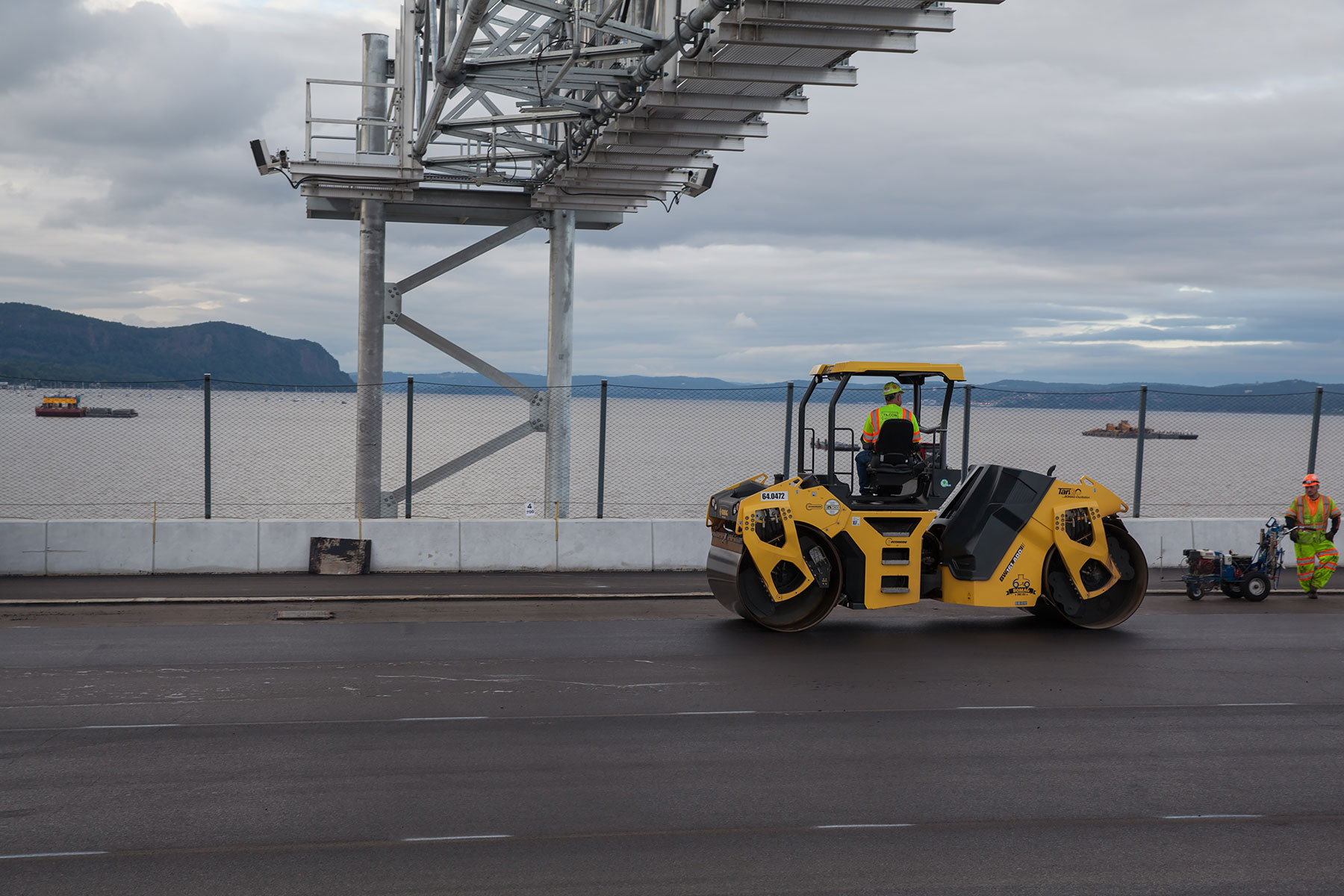
Pavement operations are scheduled to begin on the eastbound span this week. This file photo shows paving on the westbound span last year.
With key substructure and base components in place, Tappan Zee Constructors (TZC) is now focusing on making the span driver-friendly with the installation of concrete barriers, roadway lighting and pavement.
TZC’s pavement work is scheduled to begin on the cable-stayed main span this week, with crews working overnight to apply Rosphalt – an asphalt paving mix that includes specially-designed polymers. When compared to normal asphalt, the mix provides additional protection from corrosion and extreme temperatures.

The bridge’s expansion joints, (pictured above) comprised of molded rubber and small steel beams, will also mitigate temperature fluctuations to help maintain a smooth driving surface. The expansion joints are a significant upgrade when compared to the Tappan Zee Bridge. Advancements in technology as well as design allowed TZC to reduce the amount of joints required, from nearly 200 on the old bridge to approximately one dozen per span.

While paving progresses on the main span, TZC is scheduled to continue roadway work at other locations, including the bridge’s approaches to shore. TZC is currently finalizing the base roadway in these areas by pouring concrete between the precast road deck panels to create a single structure.

The progress allows TZC to complete the roadway barriers, which will also serve as bases for the structure’s transparent noise barriers near the bridge’s landings. The material is designed to block traffic sound without disrupting views of the Hudson River.

In the coming weeks, TZC will continue work on the new span’s lighting and install two overhead gantries, equipping the overhead sign structure with technology to help keep traffic moving safely and efficiently. Combined with the New York State Thruway Authority’s Intelligent Transportation Systems, the gantries and their electronic signs will allow for quick and concise communication with motorists.
As these roadway elements come together, TZC will prepare the bridge for public use by striping lanes and modifying Thruway lanes at its landings. Eastbound traffic will shift to the new span later this year.
You can receive more updates on the project by subscribing to our monthly newsletter.
